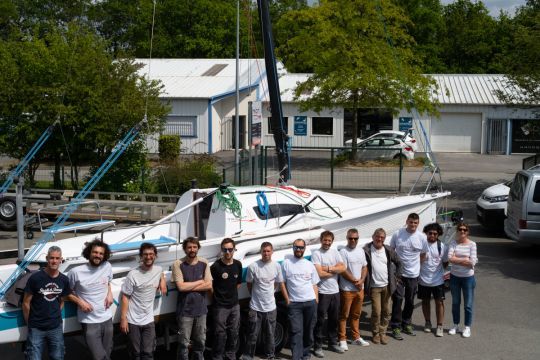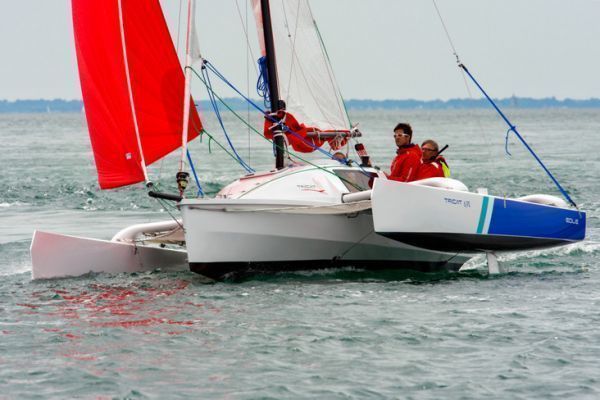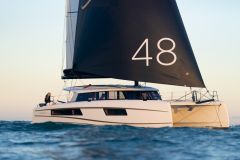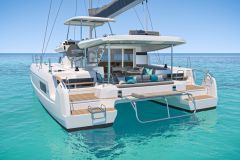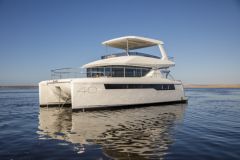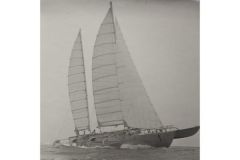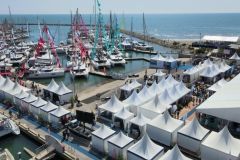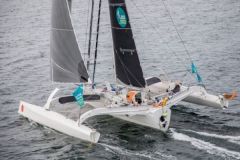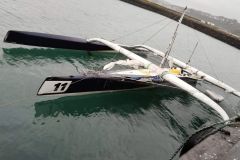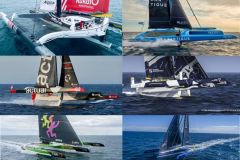Meet a sports and family program
Antoine Houdet, the creator and manager of the Tricat shipyard, has roots in ocean racing and regattas. Whether on multihulls or monohulls, he has accumulated an enormous amount of experience, acquired over 75,000 miles of sailing.
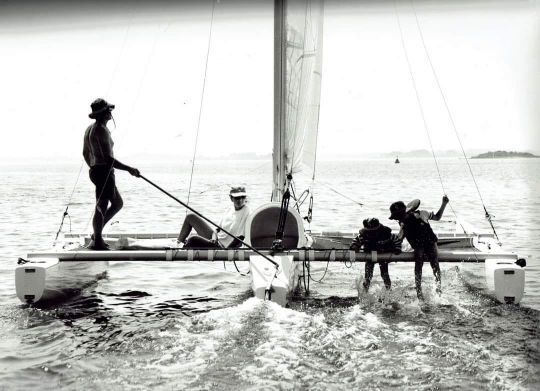
In 1998, this sports catamaran raider became a father for the second time. He was looking for a safer way to take his young children on a fast multihull. He decided to build himself a trimaran using the floats of his Alado 18, a formula 18 too sporty for young children. This is how the first Tricat concept was born, a turnkey solution to transform a sport catamaran into a trimaran.
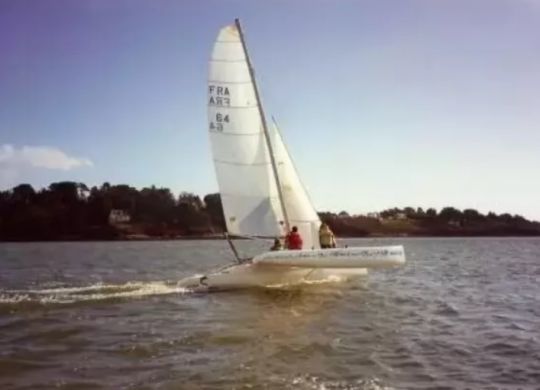
In 2002, in order to better respond to market demands, Antoine decided to design his first trimaran entirely, with the help of his friend Jack Michal, an architect from the Multiplast design office. This is how the Tricat 22 was born.
Manufactured in-house from the start, the Tricat 22 has been a great success thanks to its combination of performance, feel, simplicity and safety. Although it is no longer sold today, it remains a great pride for the company and still embodies the Tricat DNA.
In 2006, the shipyard launched the Tricat 25, in response to the growing market demand for a more comfortable and easily foldable boat, capable of accommodating more people on board. This new model, which standardized the infusion process at Tricat, has become a reference in its category, and has conquered the hearts of multihull enthusiasts with over 80 units built to date.
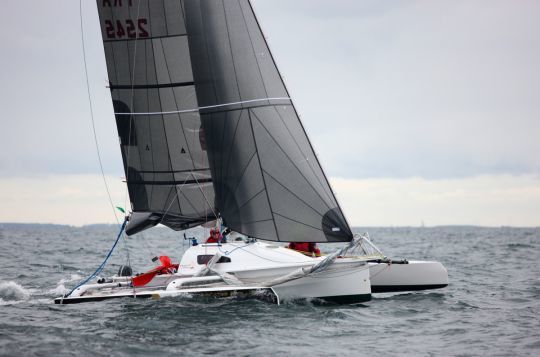
It is a testament to Tricat's commitment to continuously improve its trimarans, with many evolutions made since its creation. The Tricat 25 is still present in the current Tricat range, under its evolution version released in 2014, which modified its floats, linkage arms and rigging.
A range of transportable and folding trimarans from 20 to 30 feet

Tricat offers 4 models in its catalog: from the Tricat 20, designed for day cruising or coastal sailing, to the Tricat 30, equipped for semi-high speed cruising.
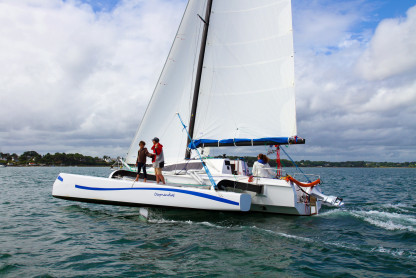
Each model of the range keeps the DNA of the shipyard, namely boats benefiting from a very high quality of construction and an easy and fast folding system.
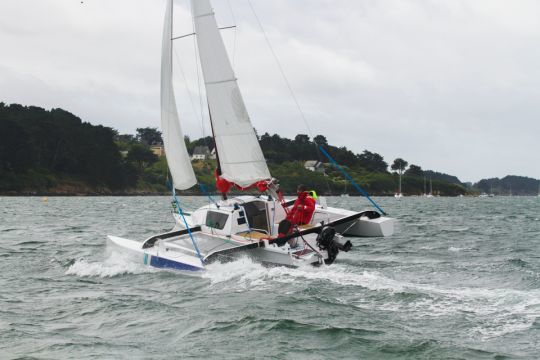
In addition to the Tricat 25, released in 2014, the latest addition to the shipyard is the Tricat 6.9. This trimaran has been designed to satisfy a young clientele, including a family and two children, who wish to fully enjoy the sea while sailing flat, and who are looking to practice cruising with a reduced budget.
The site offers three levels of equipment to meet three distinct programs:
- The standard version offers a low price ready to sail with jib and mainsail. Even in this simple configuration, the daggerboards - always saber daggerboards in the floats - are in carbon, as is the rudder blade.
- The family version is more equipped to allow spending a few nights on board. There is an extra kitchen, as well as a "nomadic electrical kit" including a battery, two cigarette-lighter plugs for recharging cell phones and a light.
- The Premium version offers a more complete equipment, with thicker mattresses, a cockpit or saloon table, additional storage space and a complete electrical system.
It should be noted that these three versions are also available in a Sport version, in which the mast is identical, but gains a longer boom to support a mainsail with horn and a jib with a larger overlap.
Sustainable development at the heart of the debate
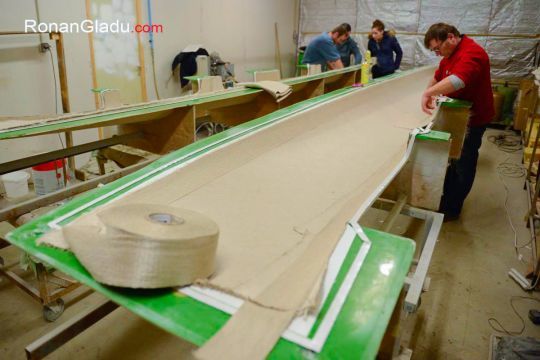
The oldest trimaran builder in France, Tricat recognizes that the nautical industry is not a model of ecology today. This is why the shipyard is constantly looking for new solutions to reduce its environmental impact.

As early as 2013, Tricat manufactured Gwalaz, a Tricat 23.5 made of flax fibers, which was a rewarding experience for the shipyard, testing new manufacturing methods, as Antoine explains:
" Despite the success in the manufacture of this prototype, we do not consider flax fiber to be a sufficient solution for the environment and for mass production at present. We therefore continue to closely monitor the evolution of technologies and materials. We are also committed to minimizing our environmental footprint by adopting concrete solutions at our scale.
At Tricat, we manufacture our boats in-house and collaborate as much as possible with local suppliers to limit our carbon footprint. We work with partners in Auray for the sails, in Vannes for the trampolines, in La Rochelle for the masts and in SÚnÚ for the saddlery, for example. We have also adopted the infusion technique since 2006 to minimize material losses. Finally, we recycle and sort our waste to minimize our impact on the environment."
The site in a few figures
Based in SenÚ from 2003 to 2011, the yard is now located in Plescop in Morbihan. Some 200 units have been produced by the Tricat yard since its creation. 12 collaborators are at work and produce about fifteen units each year.
